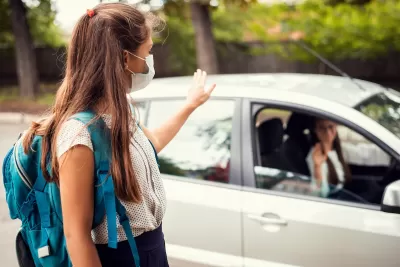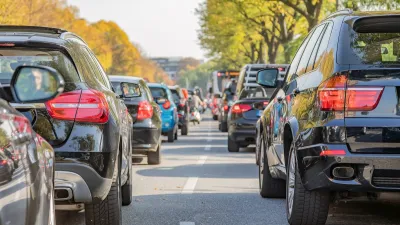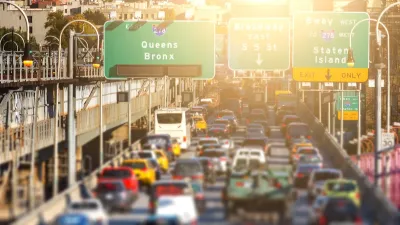School drop-off lines are becoming longer and more isolating than ever.

With more parents than ever before driving their children to school, school drop-offs are becoming a growing pain point for traffic in cities around the country, writes Kendra Hurley in The Atlantic.
The problem is multi-faceted: “For families, the long waits are at best a stressful time suck and at worst a work disruptor. Some city planners take the car line as proof of our failure to create the kind of people-centered neighborhoods families thrive in. Climate scientists might consider it a nitrogen-oxide-drenched environmental disaster. Scolds might rail at what they see as helicopter parents chaperoning their kids everywhere. Some pediatricians might point out the health threats: sedentary children breathing fumes or at risk of being hit by a car.”
For Hurley, another important aspect of the ever-growing school drop-off line is the attendant isolation. “With so many kids now attending schools more than a mile from their home, even the most beautiful, pedestrian-friendly streets may not be enough to lure passengers to the sidewalk. A leisurely stroll to a neighborhood school has been supplanted by the smelly, alienating car line.”
Hurley acknowledges that walking, biking, or public transit are not readily available modes for many American students. “But governments, schools, and communities can create new programs to fill the transportation gap” by proactively arranging walking and biking groups and urging local officials to add better bike and pedestrian infrastructure to their streets. “For families that must drive, the humble carpool can offer the same convenience and safety from crime as driving on your own, while also building camaraderie and minimizing emissions.”
FULL STORY: How School Drop-Off Became a Nightmare

Study: Maui’s Plan to Convert Vacation Rentals to Long-Term Housing Could Cause Nearly $1 Billion Economic Loss
The plan would reduce visitor accommodation by 25,% resulting in 1,900 jobs lost.

North Texas Transit Leaders Tout Benefits of TOD for Growing Region
At a summit focused on transit-oriented development, policymakers discussed how North Texas’ expanded light rail system can serve as a tool for economic growth.

Using Old Oil and Gas Wells for Green Energy Storage
Penn State researchers have found that repurposing abandoned oil and gas wells for geothermal-assisted compressed-air energy storage can boost efficiency, reduce environmental risks, and support clean energy and job transitions.

Santa Barbara Could Build Housing on County Land
County supervisors moved forward a proposal to build workforce housing on two county-owned parcels.

San Mateo Formally Opposes Freeway Project
The city council will send a letter to Caltrans urging the agency to reconsider a plan to expand the 101 through the city of San Mateo.

A Bronx Community Fights to Have its Voice Heard
After organizing and giving input for decades, the community around the Kingsbridge Armory might actually see it redeveloped — and they want to continue to have a say in how it goes.
Urban Design for Planners 1: Software Tools
This six-course series explores essential urban design concepts using open source software and equips planners with the tools they need to participate fully in the urban design process.
Planning for Universal Design
Learn the tools for implementing Universal Design in planning regulations.
Ascent Environmental
Borough of Carlisle
Institute for Housing and Urban Development Studies (IHS)
City of Grandview
Harvard GSD Executive Education
Toledo-Lucas County Plan Commissions
Salt Lake City
NYU Wagner Graduate School of Public Service





























